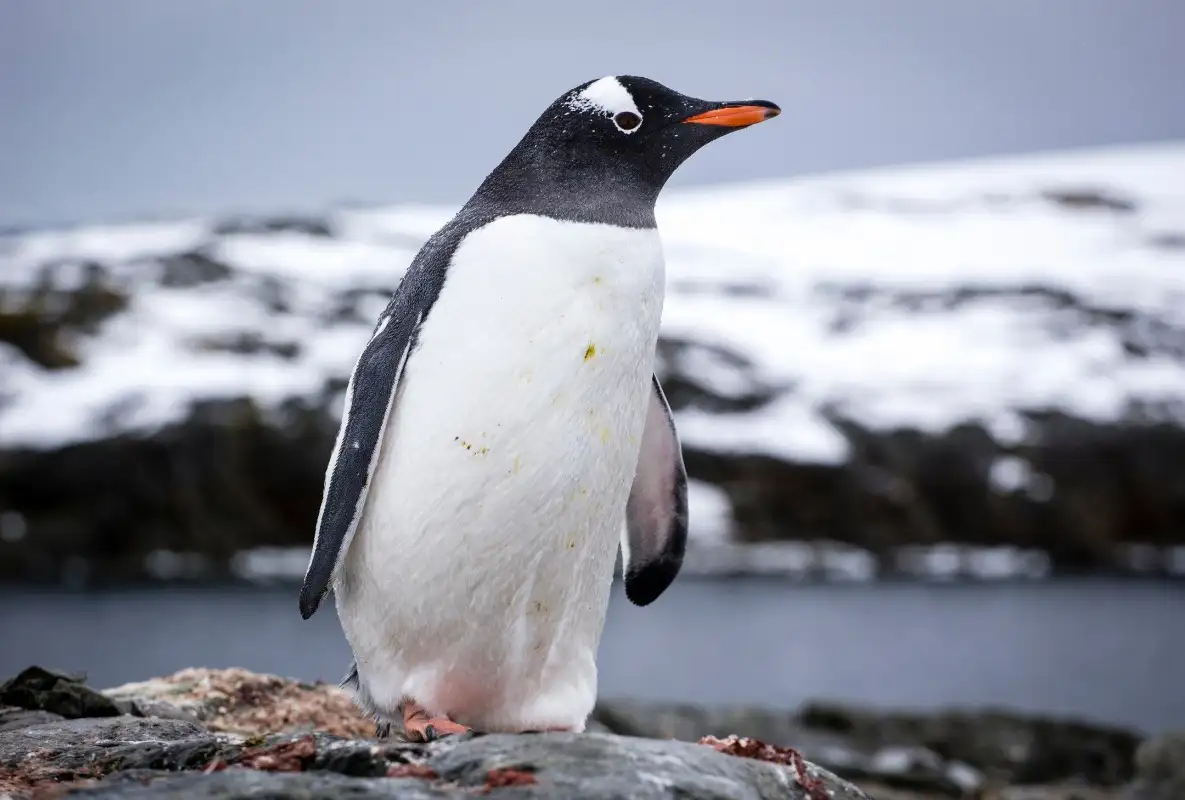Short answer:
Puffins fly and live in the Northern Hemisphere; penguins don’t fly and live in the Southern Hemisphere. They are not closely related, evolved for different oceans, and even use their wings differently in water.

| Dimension | Penguins | Puffins |
|---|---|---|
| Family / Lineage | Spheniscidae (penguins) | Alcidae (auks; puffins = genus Fratercula) |
| # of Species | ~18 (taxonomy varies 17–20) | 3 puffin species (Atlantic, Horned, Tufted). Some lists count 4 if including rhinoceros auklet |
| Where They Live | Southern Hemisphere (Antarctica to S. America, S. Africa, Australia/NZ) | Northern Hemisphere (North Atlantic for Atlantic puffin; North Pacific for Horned & Tufted puffins) |
| Flight | Flightless; wings evolved into stiff flippers | Strong fliers (rapid wingbeats); also capable divers (short dives) |
| In-Water Locomotion | “Underwater flying” with flippers; some species up to ~36 km/h (22 mph) | Use wings + feet to “fly” underwater; typical dives ~20–30 s |
| Body Size | From little penguin (~1 kg) to emperor (~30 kg) | Compact: ~0.5–0.8 kg (1.1–1.8 lb) |
| Sociality | Highly colonial; massive breeding colonies/rookeries | Highly colonial; dense cliff burrows; decoys may be used for research attraction |
| Diet | Fish, krill, cephalopods (deeper/colder waters) | Small schooling fish (e.g., sand eels, capelin), some crustaceans |
| Fish Carrying | Spines on tongue/throat help grip prey | Serrated palate lets puffins carry multiple fish crosswise (famous “row of fish” look) |
| Nesting | Ground nests, rock scrapes, burrows, snow/ice strategies (species-specific) | Burrow nesters on vegetated sea cliffs; often dig their own or reuse burrows |
Despite similar tuxedo-like plumage and orange feet, puffins and penguins sit on distant branches of the seabird tree. Penguins are a unique, fully flightless diving lineage; puffins are auks—capable of flight and adapted to both air and water.
About those names: “Puffin” historically referred to chubby seabird chicks; “penguin” was tangled with the extinct great auk in old naming—both names hinting at “fatness,” but the birds are not the same nor closely related.

Puffins: Northern oceans. Atlantic puffin breeds in the North Atlantic (Iceland, UK, Norway, etc.). Horned and Tufted puffins breed in the North Pacific (Alaska to Russia/Japan).
Penguins: Southern oceans—Antarctica, sub-Antarctic islands, South America, South Africa, Australia/New Zealand (e.g., little penguin).
In nature, you won’t see wild puffins and penguins together.
Penguins traded air for water: their wings became rigid flippers that generate lift underwater. Result: superb speed, agility, and endurance in the sea—but no aerial flight.
Puffins kept aerial flight: short, fast wingbeats deliver strong, direct flight over waves; the same wings work underwater for brief, agile dives.
Both eat small fish and marine invertebrates. Penguins often forage deeper/longer and may chase krill and squid in cold currents. Puffins focus on schooling forage fish nearer coasts.
Cool puffin trick: tiny keratin spines on the palate help clamp multiple fish side-by-side, so adults can return with a crosswise “fish comb” for chicks.

Both are colonial—safety in numbers and synchronized breeding.
Penguins: from pebble nests to ice-bound incubations; colony sizes range from small to mega-colonies.
Puffins: burrow nesters on grassy cliff tops; high-density “puffineries.” Researchers sometimes place wooden decoys to attract returning birds for monitoring.
Puffins are hand-holdable (research handling under permits, of course). Penguins vary widely: the emperor can weigh as much as a heavy suitcase. Heavier bodies and denser bones help penguins dive deep; puffins stay nimble for flight.
Penguins: sensitive to climate shifts, sea-ice changes, prey fluctuations, bycatch, and disturbance at breeding sites.
Puffins: vulnerable to warm-water anomalies, forage fish declines, invasive mammals at colonies, plastics/oil.
Responsible wildlife viewing: keep distance, avoid trampling burrows/colonies, follow local guidelines.
Puffins fly and do short, agile dives; penguins don’t fly but are elite underwater flyers. They live in different hemispheres and evolved different toolkits to master the same ocean challenge.
Are puffins “northern penguins”?
No. They’re auks, not penguins. Similar looks, distant lineages.
Where can I see puffins?
Breeding season on North Atlantic and North Pacific sea cliffs (e.g., Iceland, Faroe Islands, UK islands; Alaska to Japan for Horned/Tufted).
Do any penguins live in warm places?
Yes. Several species live in temperate and even equatorial waters (e.g., Galápagos penguin), but all penguins are Southern Hemisphere natives.
How long do puffins dive?
Typically 20–30 seconds per dive; penguins commonly dive longer and deeper.
Which carries more fish in the bill?
Puffins—thanks to their serrated palate, they can hold multiple fish crosswise for chicks.
We created this article in conjunction with AI technology, then made sure it was fact-checked and edited by a Animals Top editor.